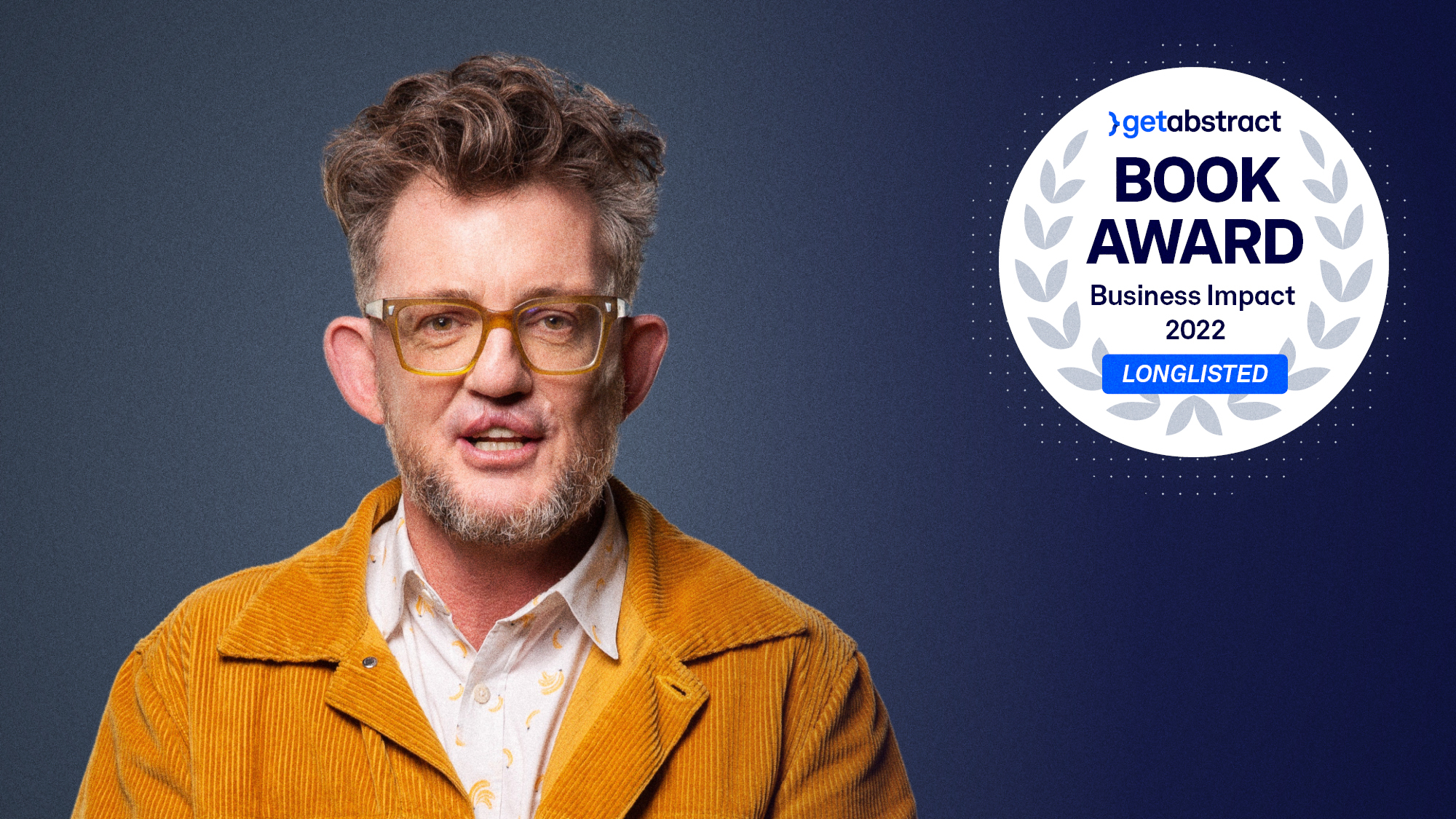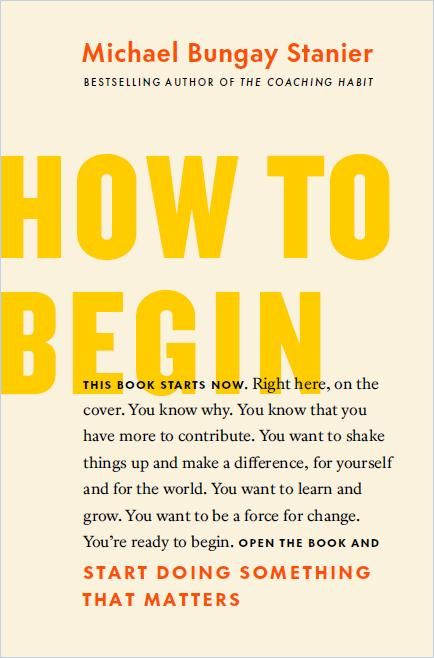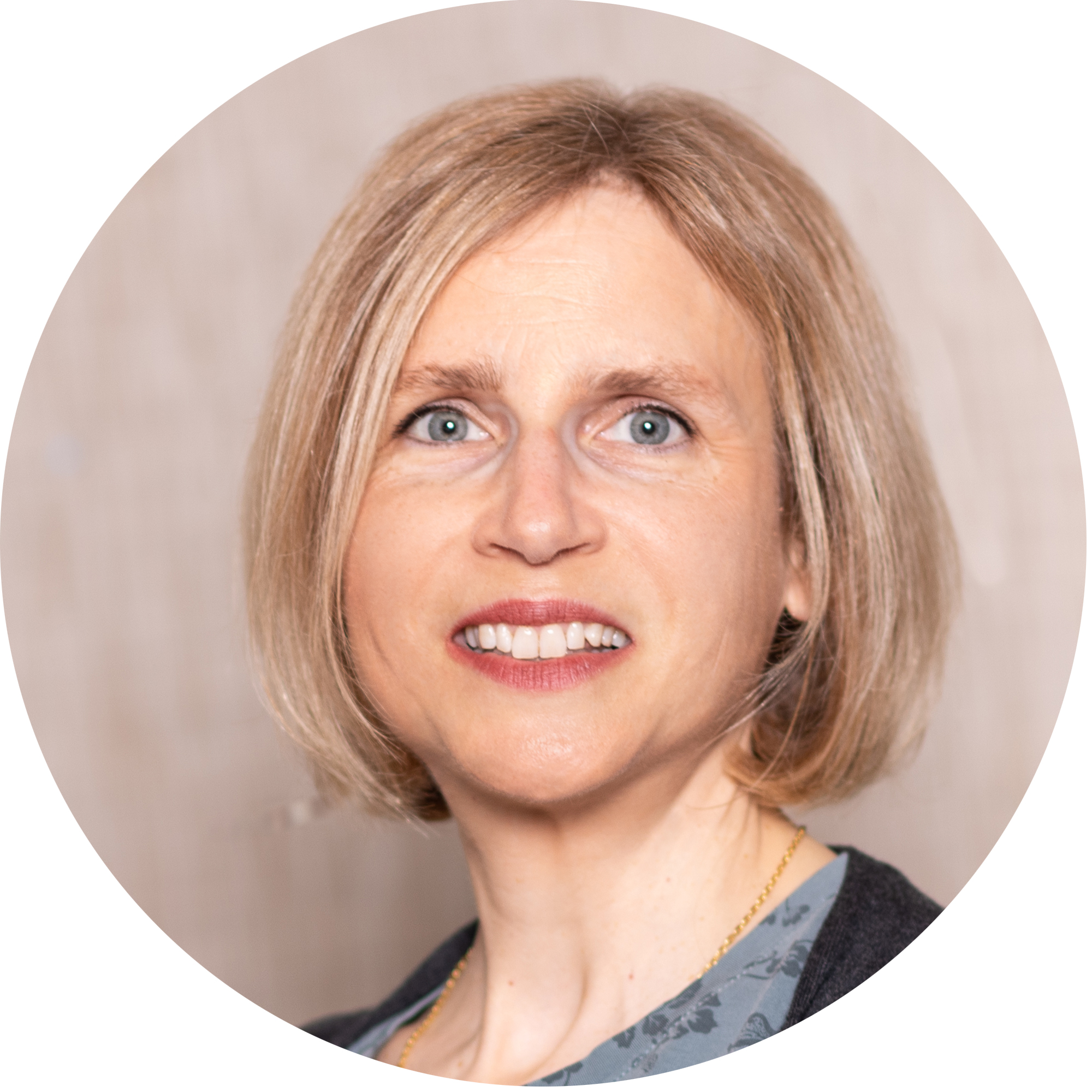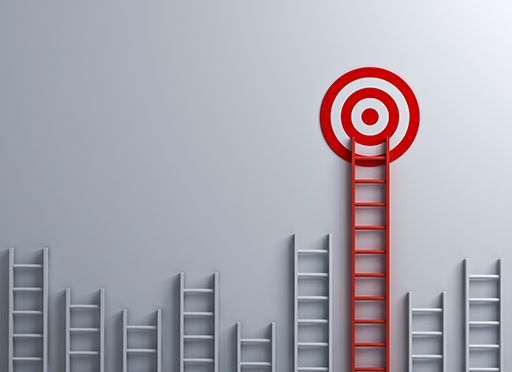“Unlock Your Greatness by Working on the Hard Things.”

Michael, how did you decide to write the book, How to Begin?
Michael Bungay Stanier: My intent was to follow up on my previous book, The Advice Trap. Among other things, the book talks about how to change your behavior so that you stay curious a little bit longer. Many of us struggle with this, so I wanted to delve more into behavior change. When I showed people my first draft of what was meant to be my next book, everybody said it was terrible. When going through the rubble of the first draft, one phrase stood out to me: ‘Unlock your greatness by working on the hard things.’ I felt that this was very true for me. I’ve unlocked the best of who I am by taking on ambitious things that stretch me and challenge me and are hard for me. I think the same is true for other people I’ve met and coached. So I ended up writing a book that helps people identify the hard thing for them and gives them the courage to start working on it. The idea is to find something that matters and give people the opportunity to unlock the next best version of who they are.

Some people struggle with getting started. Perhaps they feel overwhelmed by the daunting task ahead and procrastinate. Or they lack the self-confidence to tackle the task. Or they feel they don’t have the time. How can your book help people move from paralysis to action?
It’s really helpful to start by asking yourself where you’re stuck. What are the things that have your feet in the mud and unable to move? Sometimes, it is an overwhelming sense – a sense that there are just too many things to do. At other times, it’s a sense of disconnect – of not clearly identifying what you want to do. Maybe there’s one part of you saying, ‘I should do this,’ and another part going, ‘I’m not that interested.’ You also may be asking yourself, ‘Does this even matter?’ or, ‘Is this the right thing to contribute to the world?’
I’ve unlocked the best of who I am by taking on ambitious things that stretch me and challenge me and are hard for me.
Fear may also hold people back. One of the things that I believe is true about setting a worthy goal is that it needs to be daunting. It needs to challenge you. It needs to take you to the edge of who you are and what you know and what you’ve achieved. In some ways, it’s natural to feel a little stuck and overwhelmed by what you’re doing.
So how do you get going when you are stuck?
There are two key things here. One is to take small steps. There is the saying that you eat an elephant one bite at a time. Secondly, it’s helpful to get good people around you, people who encourage you and push you and cheer you on. Your support network will help you keep moving when you feel you want to give up.
While some people struggle with getting started, others are more like “serial starters” – they keep starting new projects and then abandon them a short while later and move on to the next project. How can your book help people like that push through when they face a bump in the road or stay motivated to achieve the goal they have set for themselves?
If you’re a serial starter, you’re a dabbler. You keep doing little things. A powerful thing to ask in this case is, ‘What’s the price you’re paying for only being a dabbler?’ Sure, some people like starting different things and then abandoning them to get to taste many things without committing to them. But if you want to make a worthy contribution to the world, you need to go further. The middle section of the book prompts you to have a deeper conversation with yourself by asking, ‘What does it really mean to commit to this?’ And, ‘If you say yes to this, what are you going to have to say no to? What’s the price you’ll pay for taking on this project?’ Because there will be some things you can’t do and some people might be disappointed in you. It’s important to understand what commitment looks like fully. And when you do that work, you’re more likely to stay the course when you want to quit.
How does the way we start a project impact the success rate of achieving your goal?
The most important thing is to pick the right goal. This in itself can feel a bit intimidating in the sense of, ‘How would I know if it’s the right one?’ The answer is that you don’t, but it’s worth thinking about it and then taking your best guess. Thus, the first section of the book walks you through the process of drafting and redrafting a worthy goal.
If you want to make a worthy contribution to the world, you need to go further.
How do you identify a “worthy goal?” What are its ingredients?
A worthy goal encompasses the best possible mix of thrilling, important and daunting. Thrilling means you’ve made it as exciting for you as possible. It lights you up, gets you excited, makes you rub your hands together and go, ‘I love doing this.’ Important means that your goal contributes to making the world at least a little bit better. So you’ve got internal motivation, which is the ‘thrilling’ part, and you’ve got external motivation, which is the ‘important’ part. The final ingredient of a worthy goal is that it is daunting. The goal needs to stretch you and help you grow. Ask yourself, ‘Is this how I’m going to unlock my greatness?’ A worthy goal checks all three boxes.
It’s important to understand what commitment looks like fully.
How about goals that are less tangible? Say, your goal is not to lose 10 pounds (which would be measurable), but to feel more healthy and energized. Or you have a goal such as, “I want to be more patient?” Is your How to Begin process also suitable for adopting new habits?
There are different levers that you can use to keep you on track. One is to track your progress. Sometimes you can define your progress in numbers, such as writing 500 words a day on your new book. Another way is to use more qualitative measures. For example, your goal at the end of each day could be to be able to name three acts of love or appreciation you did during the day. Or you could use a scale of 1 to 10 to rate how proud you are of how you showed up each day. What is important is defining what progress on your worthy goal means for you and finding a way to measure it.
A worthy goal encompasses the best possible mix of thrilling, important and daunting.
We all have moments where question our ability to succeed. Do you have some tips for overruling self-doubt?
It’s helpful to appreciate that self-doubt isn’t failure but part of the process. There’s not a single person in this world apart from maybe psychopaths who don’t ask themselves once in a while, ‘What am I doing and who am I?’ or, ‘This is a terrible idea,’ or, ‘I’m never going to finish.’ There are two places you might choose to look. One is the people around you. If you have the right people around you, they will remind you of your strengths and of how you’ve overcome similar obstacles in the past.
It’s helpful to appreciate that self-doubt isn’t failure but part of the process.
The second piece is to write down in advance how you will return to being the best version of yourself after going off track. I keep what I call a ‘This, Not That’ card. The ‘This’ section describes what being my best self looks like. The ‘Not That’ part tells me what it looks like when I’m off my game. So I want to be trusting, not anxious. I want to be playful, not too serious. When I’m stressed, I’m all the things listed in the ‘Not That’ column. I can check my card and say, ‘Oh, I’m overly serious. How can I get more playful around this issue?’
People rarely succeed doing it all alone. How do you go about selecting your support system?
It’s funny, I’m doing that right now as I’m building a new mastermind group for myself.
What is a mastermind group?
A mastermind group, sometimes called a brain trust, is a group of people who regularly come together to support each other on the stuff they’re working on. Sometimes, the kind of support you need is more tactical. At other times, it’s more emotional. You’re looking for people who have similar values, similar ways of seeing the world as you do. The people you gather may also have similar emotional intelligence as you do, so you find yourself at the same level. On the other hand, people in your mastermind group don’t need to have the same kind of background or technical expertise as you do.
Your support network will help you keep moving when you feel you want to give up.
What is your current mastermind group like?
For me, right now, I’m looking for people who are willing to be quite vulnerable and talk about stuff that’s hard for them. I talk to my mastermind group once a month online and exchange emails between sessions. We also try to meet in person once a year. I think it’s quite interesting to start with people outside of your circle. This offers you an opportunity to build deep new relationships and friendships – opportunities that don’t come around that often.
About the Author
Michael Bungay Stanier is a best-selling author, public speaker, coach and founder of Box of Crayons, a learning and development company that helps clients transform cultural behavior within their organization.






